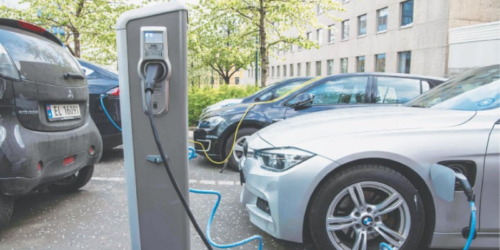Electric Vehicles (EVs) have already caught the interest of large populations of the developed countries and the Pakistani public as well awaits with excitement. Tesla has surpassed all international car manufacturing companies in terms of market capitalisation. The financial incentive in the form of hard cash given by the western governments to the consumers has been the key factor in the rapid adoption of EVs.
Despite these incentives, the road to achieving full conversion to EVs from conventional petrol-based vehicles is going to be a long one. The main limitations of EVs are their high cost and limited range (distance travelled between charges). As Pakistan considers the adoption of EVs on a large scale, there is a need to learn some useful lessons from the experience of other countries.
When Tesla came out with its first series of EVs, its success was largely due to a lucrative cash subsidy that the governments of the USA and Canada directly gave to the consumer which made a very expensive car more affordable for the buyer. The attraction for EVs is also due to the awareness about global warming the effects of which have already started becoming visible.
Another factor is cheap electricity due to a sharp drop in the price of solar and wind turbines. Tesla built its own free-of-cost charging stations in many locations making its products even more attractive. Probably none of these factors is on the mind of Pakistani consumer, which is mainly interested in EVs because it is the latest trend.
Before riding the EV wave in a big way, Pakistan must consider all the factors because due to their high-cost EVs will be a big burden on the country’s import bill.
By replacing the conventional vehicles with EVs, Pakistan’s fuel import bill will be reduced as most of the finished petroleum products used in transport are imported. Homes equipped with solar roof-tops can charge their EVs with clean energy virtually for free as long as the sun is shining.
However, it will not contribute much to a reduction in global Greenhouse Gases (GHGs) because Pakistan has a negligible GHG footprint. Furthermore, EVs will not cause a major reduction in GHGs if they are charged with grid-based power because most of our electricity generation continues to be based on fossil fuels. To have any meaningful GHG reduction, commercial charging stations will need to be fully based on their own solar/wind power sources.
The EVs can be charged in two ways: slow charging using a typical power outlet at homes and fast charging at a commercial charging station. Charging them at home is a slow process while fast charging stations too, if available, can take up to an hour. Further, such charging stations will need to be widely available on urban roads and highways for which the nation will have to pay a heavy price.
The more common mode of charging that the Pakistani EV owners will use will be their 220-volt electric outlets. As vehicles are in use during the day and parked at night when they would normally be recharging, they cannot benefit from the home-based solar roof-top system. The alternative would be to install a battery storage system to store the energy produced by the solar cells during the daytime and use it to charge the vehicles at night which is highly cost-prohibitive and inefficient.
The future of the transportation world indeed lies in EVs and the question is how Pakistan can best prepare for that future. As the technology will take many years to fully mature, Pakistan should make a gradual, phase-wise entry into the EV space.
As a first step, small-utility vehicles such as auto-rickshaws and motorcycles can be replaced with those that run on electricity and for this, the government should be ready to give the necessary subsidies as they will benefit the lower-income population. Electric auto-rickshaws, besides removing noise pollution, will improve the income of their owners by replacing expensive liquid fuels with a relatively cheaper electricity source although a full economic comparison with liquid fuels is not available.
The motor-cycle owners too, belonging to the low-income class, would benefit from any financial incentive, especially those who use their bikes to make a living. Next, smaller size compact passenger EVs will make sense for Pakistan’s situation as they offer the advantage of replacing oversized, old passenger cars and cause lesser traffic congestion on the roads.
These types of vehicles use relatively smaller batteries and their charging will not be as cumbersome as large passenger vehicles. New business activities, eg stations where fully charged batteries can be swapped with depleted batteries must be actively promoted. Such battery-swapping “on-the-go” would be especially convenient for two- and three-wheelers and small passenger cars due to their smaller sizes.
In terms of investment opportunities, Pakistan can build an indigenous manufacturing base of small EVs and their related industries, namely batteries and charging stations. Due to a larger market of such vehicles, it would be financially viable to develop an indigenous production capability that can be later on geared towards export sales.
Meanwhile, the import of EV passenger vehicles should not be encouraged as they require a substantial foreign exchange due to their high cost. There is a need to carefully tread on the path to the wide-scale adoption of EVs as the storage technology is still evolving and it is possible that Lithium-ion will be replaced by some other technology.
However, as an interim measure, until domestic manufacturing capability is created, the import of batteries for small-size vehicles may be encouraged. A focused and carefully formulated strategy will ensure that EVs bring maximum economic benefit, including investment and employment to Pakistan.





